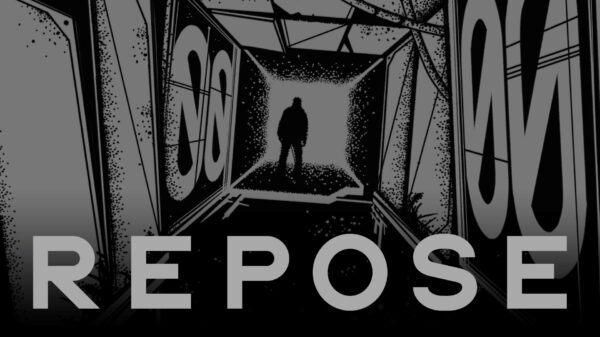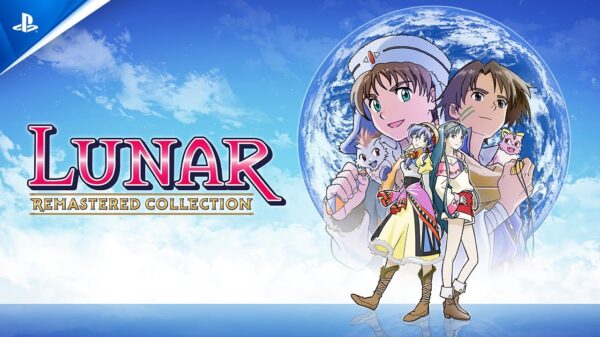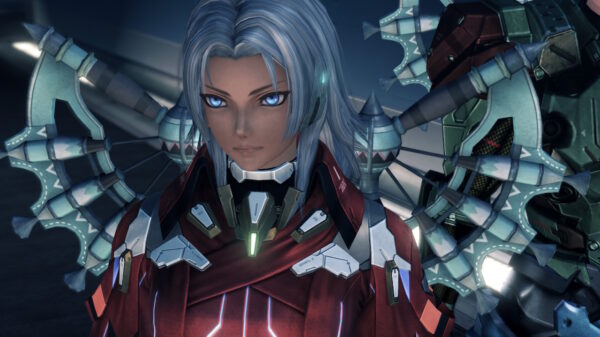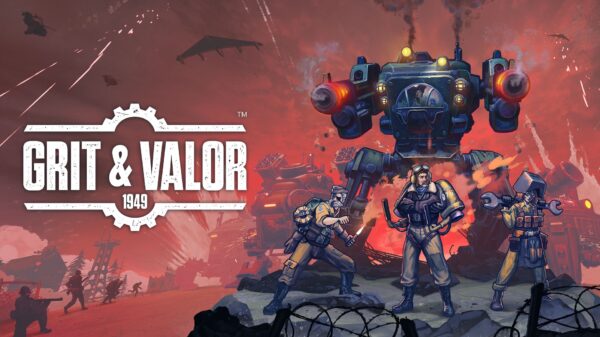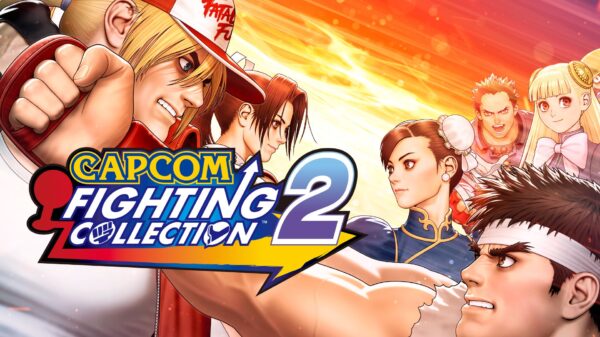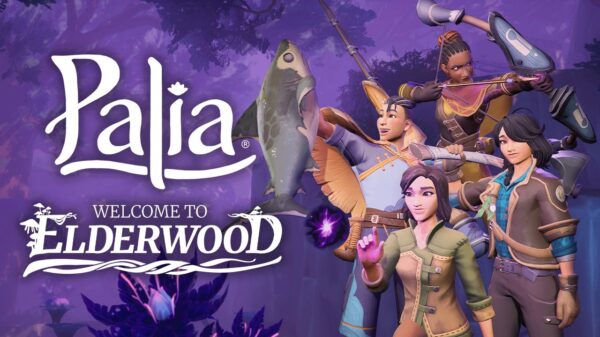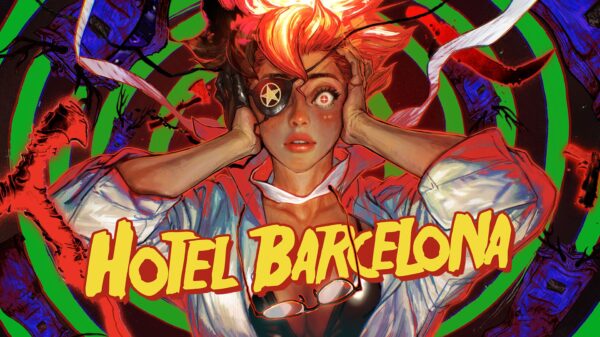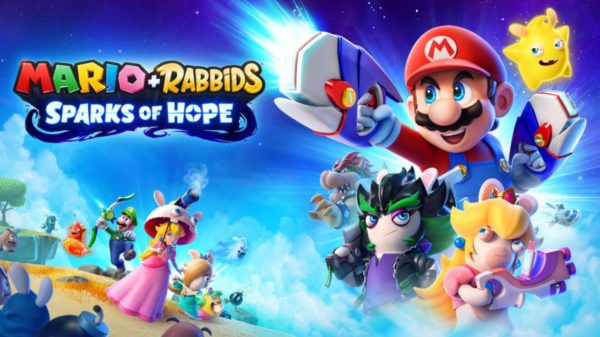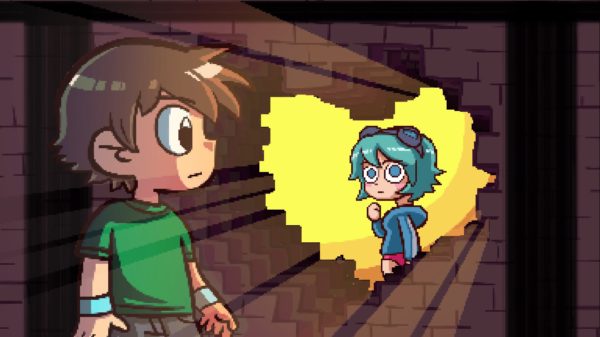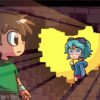The Prince has seen better days. Imagine yourself put in his position. You lose your way in the desert, you get separated from your donkey who is carrying enough gold to buy anything you want, and you find yourself in a sandstorm. Not a very good day. The Prince’s streak of bad luck doesn’t seem to end though when he meets Elika, a girl with mysterious powers and he ends up taking part in a quest to save the world from an evil god called Ahriman. Oh boy, what a day…
Prince of Persia
Developer: Ubisoft Montreal
Platform: PlayStation 3 (reviewed), Xbox 360, PC
Yep, after meeting Elika the Prince has his hands full with saving the world. But where was he going to begin with? Well, we don’t really know. The Prince is never said to be a prince either, he’s just a mysterious stranger, who is most likely an adventurer and a thief…excuse me, tomb raider. Hey, he himself says the proper term for what he does is tomb raiding. Well, for all we know he could be the Prince of Persia who decided to run away from his responsibilities and became a Prince of Thieves. In any case our hero is a completely different person from the one in the Sands of Time trilogy, I just thought I should clear that up. A new prince, a new start.
Don’t be afraid though, Prince of Persia is still as much of a platformer as it ever was. The basic concept is still to make your way through ingeniously designed areas using the Prince’s awesome acrobatic moves, which are similar to parkour. The gameplay did go through some change however; first and foremost the game takes place in a completely open world and allows the player to choose where he wants to go. There are some limitations, at first we can only visit four areas in any order, but once the player collects enough light seeds he can activate one of the four powers Elika can use. The map clearly shows which power opens up which areas, so the player can freely pick where he wants to go. There are the four initial places that each lead to one of the four big sections which are compromised of four areas each. The objective is the reach the so called Fertile Ground of each area and heal it using Elika’s power. Once the place is healed, the darkness decay caused by Ahriman’s corruption is cleansed and everything returns to it’s former glory. When this happens, light seeds show up all over the healed area and the player can collect them to obtain new powers for Elika. There are 1001 light seeds in the game, but only around 570 are needed to complete the game, so the rest are just there for collectors who are trying to get the unlockables for getting them all. When all four areas of a section are cleansed, a fifth area opens up where the player has a final showdown with that section’s boss.
The Prince’s moves are truly marvelous. It’s good to just look at him moving. His movements are very fluid and string together very well, you can do a series of acrobatic moves and it feels fast paced and natural. Our hero’s moveset has been downgraded a bit since the last installment however. First off he doesn’t run up walls anymore, only forward, and he doesn’t do any backflips or flick flacks. It appears to me that the developers choose to go with a different kind of platforming this time around, because the main goal and source of fun is not exploring this time around. What I mean is that the game focuses less on Tomb Raider-like platforming, where the player is constantly thinking of which way to go, what to do and things like that. Perhaps a bad comparison, but the game seemed to remind me more of what Sonic the Hedgehog was about: fast paced, fluid platforming. So when I was playing the game, my main focus was on executing every move perfectly and keeping the flow and the speed of the game going as much as I could. So while playing, I wasn’t thinking “Oh, where to go now. I see, jump up there, jump left, grab that ledge, yeah I’m on track…uh… jump to the pole, jump of it…and I’m there.” instead I was thinking something more like: “Jump, run, double jump, grab pole, jump immediately, wallrun, jump once it’s over, slide down, jump at the end, run, jump etc.” I’m not sure if I got the message across pretty well, but the point is, the new Prince of Persia is a lot faster than it’s predecessors. And it works really well, thanks to the new controls.
Yes, the controls have been changed. I’ll be honest, at first I wasn’t very fond of them. If you’ve played the Prince of Persia games from the previous generation you know that the controls were pretty much perfect, so the developers were taking a big risk when they decided to alter the game’s control system. In the end, I can’t say it’s any better than the old one, but I can say that it isn’t any worse. You see when you change a system that works perfectly, you can’t really improve it. The new controls – even though they aren’t a definite improvement – fit the gameplay style and make the platforming go much faster. The platforming is done with basically only two buttons: in the PS3 version, the X button is for jumping, the triangle button is used for using Elika’s powers, while the O button is used for grabbing rings that extend the Prince’s wallrun. One important thing to mention is that the controls are kind of hard to get used to. You see, unlike in previous games, you don’t have to hold down a button or press it again while you are performing an action. The Prince will use the move you activate to it’s fullest automatically. So just by jumping on the wall by pressing X, the Prince will wallrun as far as he can automatically and will only end the wallrun if you jump off the wall or if he can’t continue moving anymore, in which case, he falls. In short, whenever the Prince is performing a move that doesn’t require you to input directions and whatnot, he does the most he can automatically after you press the required button. I’ll be honest, this seemed very uninvolving at first, however after a while I thought it worked very well. Basically, since it’s so simple, you can keep up the speed of the game very easily which is good. 
Some elements were taken out of the new PoP game. The level design doesn’t have any ropes to swing on and since there’s no Daggertail (the Dark Prince’s weapon from The Two Thrones) this time around you can’t swing like Spiderman either. I don’t think these are really flaws because the reason they are omitted are because of the level design and story and mostly likely not because the developers lost their creativity. We do get new elements too, for example now they are rings on walls that allow us to keep moving further while wallrunning or while climbing on the ceiling of something. Climbing ceilings is a new ability as well, courtesy of the Prince’s new glove which also allows him to grind down walls, which is a very useful, if a bit slow, because it can save the Prince’s life quite a few times: instead of falling to his doom he just grinds down to a safe area, if there is one. Although, the player might just be better off jumping off due to Elika’s power of saving the Prince and teleporting him back to the nearest flat surface, which saves you time and takes you back to the nearest safe area you touched before the event of your death.
Since she came up, let me tell you about Elika. Elika is the Prince’s partner, who’ll always be tagging along with him. Elika takes part in travelling and combat and as such has multiple abilities. She’ll always follow the Prince and save him whenever he falls of a ledge or dealt a fatal blow by an enemy. Elika’s magical abilities also come useful for moving around, together with her the Prince can double jump and she can also activate power plates which allow her to use her unlocked special powers. These special powers allow the two of them to fly, run on walls forever and jump very long distances. The powers are mostly fun to use, however they are all scripted, so the player can’t just use them whenever he pleases. They are very fun, just don’t expect to be allowed to fly whenever and wherever you want. 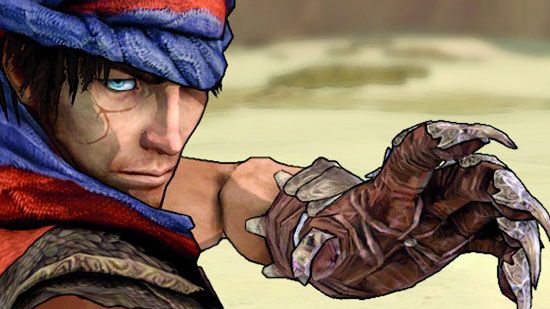
After Prince of Persia came out I heard a lot of people talking about Elika making the game too easy by saving the Prince every time he’s about to die. Let me address this a bit. True, the game isn’t very hard and you can’t die while playing, however that doesn’t mean the game is not fun or challenging. You see, just because you don’t actually die doesn’t mean it’s not challenging. Despite people calling it easy, I still fell to my death over 100 times while playing, evidenced by the fact that I didn’t get the “Treat Her Gently” trophy which you get for being saved less than 100 times by Elika. Personally, I’m willing to bet that if it wasn’t for Elika’s saving animation, people wouldn’t complain half as much. Yes, if the Prince would just die and respawn on the nearest flat surface, people would complain a lot less. Prince of Persia is all about platforming and the fact that Elika instantly revives the Prince only helps the game – while the player is still set back if he dies (dying while exploring means redoing the failed part, and dying while fighting causes the enemy’s health to regenerate) he isn’t set back enough to break the flow of the game and what’s more the game doesn’t become frustrating. Not only that, but in my opinion there really isn’t much point in dying in a game like this. You see death isn’t really a threat to begin with, if it weren’t for Elika, what would happen then? We’d be asked if we wanted to continue or not, select yes, and try again from a checkpoint. And depending on how far that checkpoint is, we’d get frustrated very soon if we have to redo a 15 minute segment of the game because we missed one lousy jump, especially in a game like Prince of Persia, where the platforming is so complex that timing a jump a second late can get the player killed. It would just ruin the flow of the game and Prince of Persia isn’t a game that focuses on the player’s survival in any way, it’s not like Resident Evil where it’s all about survival or Resistance 2 where it’s all about coming out of a battle alive and victorious, the game is just about platforming in a fast, stylish and exciting way. In short, this new system doesn’t eliminate the challenge, it just eliminates the frustration. I think it might be not everyone’s cup of tea, but most people will definitely not mind not having to sweat blood to get past an obstacle.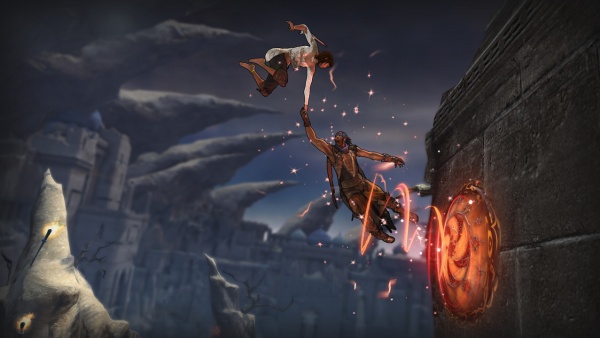
However even so, I can’t say that the game will satisfy everyone’s taste of difficulty. Creating an open world to the degree and in the style of Prince of Persia does sounds good in theory, however when you create such a world the difficulty curve disappears. Having an open world means that the levels have to be similar in at least difficulty, because otherwise the experience would be ruined: completing the hardest levels first and then the easy ones would make the game boring. Ubisoft made a fun open world, but the levels are very similar and equally challenging. This may sound good, but it can make the game repetitive for some people, since you’re basically doing the same in each area: complete a platforming sequence not any more challenging than the last one, fight the boss, heal the land, start again. However the platforming experience makes up for this shortcoming quite a bit.
Along the way there are a few puzzles as well, as expected from a Prince of Persia game. They are a nice addition, adding some variety to the game but their numbers are scarce. They are fun to do, however I do think they break the flow of the game. While not particularly hard, they are quite time consuming and they stop you in your tracks. Fun, but I think they would’ve worked better if they took less time to do. A suggestion for the next Prince of Persia game: if it’s focus on platforming this much, keep the puzzles clever, but make them shorter, instead of having to use ten switches, make it five. They should also involve more platforming, I remember a couple of puzzles from the Sands of Time trilogy where platforming was involved and they made the puzzles more fun since you were on the move and it felt like you were doing something. This game’s puzzles on the other hand stop you in your tracks and force you to keep running around between a bunch of switches in small rooms. 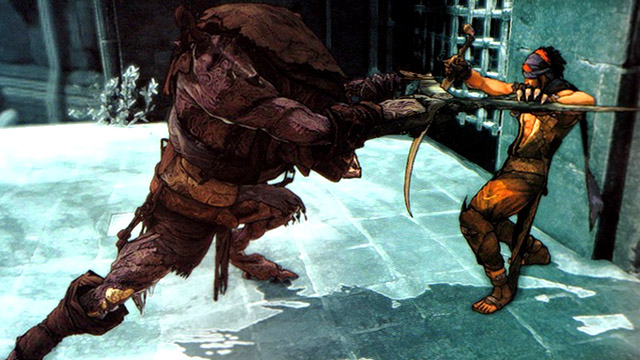
What about the combat, I hear you ask? Well the combat is…both better and worse compared to the previous games. Let’s recap; in the previous Prince of Persia trilogy the combat was fast: the Prince’s parkour moves blended with his fighting style and he jumped, rolled, slashed, blackflipped and used the environment to his advantage until his enemies were down. This is pretty much nonexistent in the new Prince of Persia. The way I see it, the developers’ idea was to make every battle look and feel epic and grand as if every battle was to the death. This however also makes the combat very slow and to be honest, encountering normal enemies break the flow of the game, although luckily they can be killed quickly by pushing them into a wall or down a cliff. With bosses it’s not that bothersome because the battles against them are the culminating point of each level, basically they’re like the final challenge after you work your way through a level. The combat uses an easy to learn system; there are three types of attacks which can be mixed to create combos: sword attack, gauntlet attack and Elika’s magic attack. The combat is very satisfying to look at and simple to learn, featuring scripted Quick Time Events. These QTEs are not very good however, to be honest they need to be pressed so precisely that the only ones I could win on my first try were the button mashing sequences. If the focus was on timing I needed a second try to get it right, but I suppose some people can manage it easily. Still, even though the combat is stylish, flashy and very user friendly, it can get a bit repetitive. The combos are few and limited and after you’ve seen them a couple of times they really aren’t that impressive anymore. Not only that but basically you fight each boss six times, and even though the game tries to mix things up – giving the bosses unique abilities and forcing the player to kill them in a specific manner – it does get boring as you go on and depending on your taste, you might get bored of it rather soon. However, I found that each boss fight is fun to play through at least once, so if you don’t mind the slight repetition factor you’ll have fun with them. Another small problem with the combat is Elika’s ground attack, where she needs to be very close to the enemy to attack, otherwise she won’t do anything and it’s quite bothersome to get hit because you are a tad far away from the enemy.

I admire the fact that Ubisoft tried to improve upon it’s combat system by simplifying it, but I feel they didn’t think it through. In the previous trilogy, the main problem I had with the combat system was it’s repetitiveness and it’s tendency to get boring. When you got into a battle it often dragged out very much because the enemies were just too defensive, not only blocking every fifth hit, but also being very resistant to the Prince’s attacks. These coupled with the fact that stronger combos were hard to execute made me want to avoid the combat entirely. In Prince of Persia the combat is less annoying, but these factors are still there, particularly the first one. The enemies block the Prince’s sword attack quite often, discouraging the player from using it. This not only makes the combat slower and more annoying, but since the sword-type attacks are blocked, the player will use different attacks and because of this the already small selection of combos becomes even smaller, increasing the repetition factor. Also, while the QTEs may be fun to do, the size of the battle “arenas” are very small and this results in QTEs appearing very often during boss battles, to the point that the player goes bored of them relatively fast. What I did like about the new combat system though was that it was easy to get killed which raised the tension, and to be frank this is the only part where I didn’t like the fact that Elika saved the Prince, because I think that even though the enemy’s health gets regenerated each time the Prince fails, being scared of dying in a battle really improves the experience, raising the excitement and adrenaline much better than any alternative. It would’ve also made the “last-minute-escape” QTEs more dramatic.
Anything I forgot? Oh yes, the graphics and game length! How could I forget? Well actually I didn’t, but I couldn’t fit them in anywhere till now. Plus there’s not much to say, they look really good. Not as painting-like as I had expected, but still very good and very colorful once you cleanse the areas of the corruption. The characters look really good in the cel-shaded style and the environments are often breathtaking. How about the game’s length? The main game can be beaten in 10 hours, however there are various costumes to unlock, trophies/achievements to obtain and 1001 light seeds to collect, which all add a lot to the game’s lifespan. 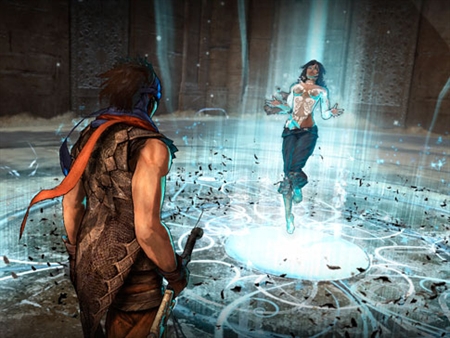
Speaking of characters, Elika and the Prince are both likeable. The Prince is your typical funny, witty, optimistic guy and as much as a stereotype he is, he can grow on the player easily. Elika is a bit more complex, sometimes flirtatious, sometimes serious, sometimes witty and even fragile at times. She also has a great voice actor – just like the Prince – and she can really add some extra fun to the game if you talk to her. Yes, there’s a button designed specifically for talking with Elika. Using it gets you information on the world, the situation and herself. They are not mandatory, but you should try talking to her at least a couple of times, some of the pair’s discussions are interesting and funny.
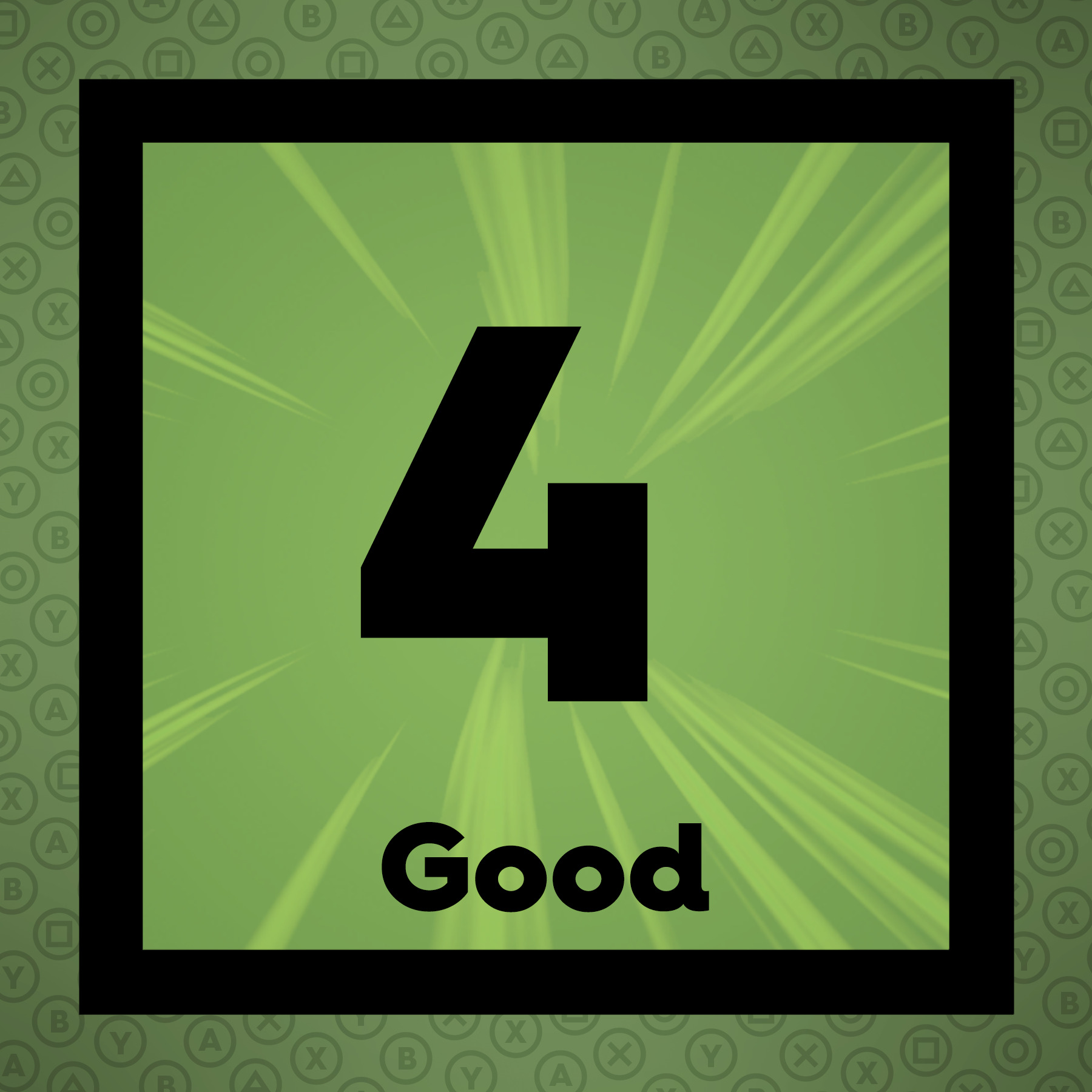 The Final Word
The Final Word
Prince of Persia is quite a peculiar case. It has some of the most addictive platforming elements I’ve ever seen and it’s insanely fun to play. However, when you put it down and think on it, the negative qualities become more apparent. Still, it’s a very fun game to play where the positive qualities far outweigh the flaws of the game: by the time you’d grow tired of the game’s problems you’ll encounter a great platforming section that makes you forget about all of the game’s shortcomings. That’s how it is for the entire game, while some parts are not as good as they could be, the main element is so well done that it will make you keep playing until the end. Recommended for fans of the genre.
– MonsterVine Rating: 4 out of 5 – Good

